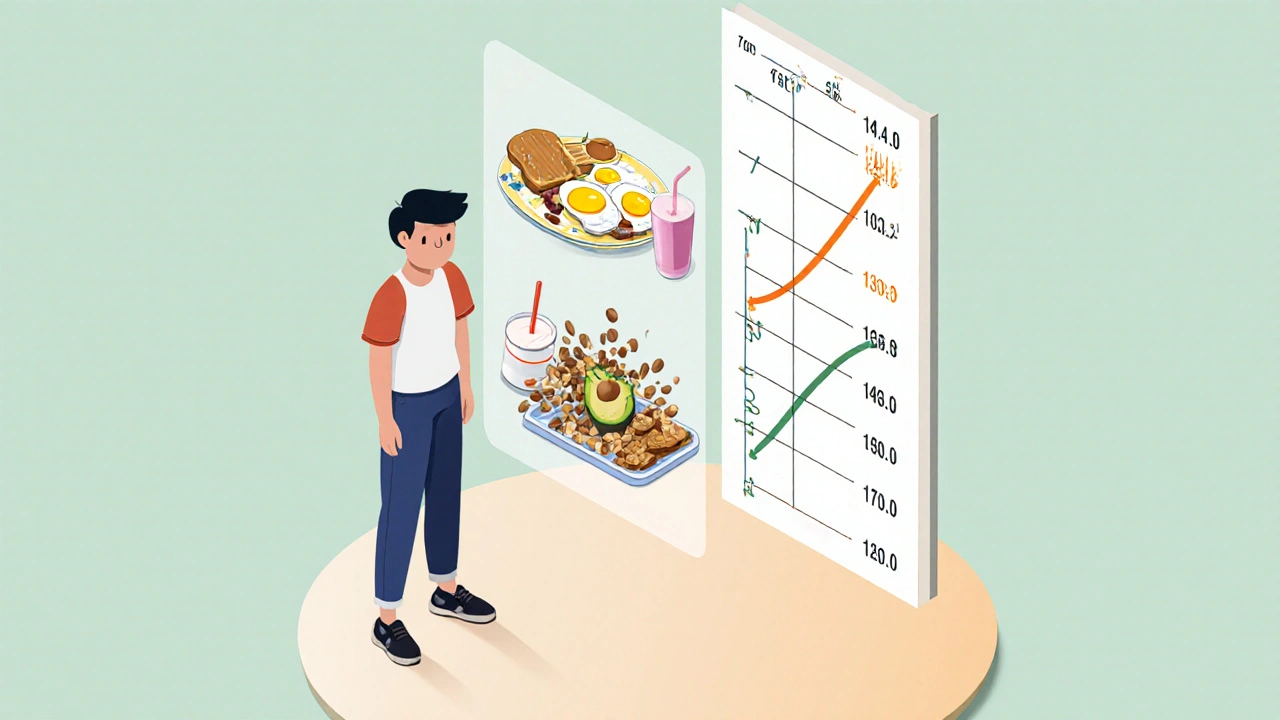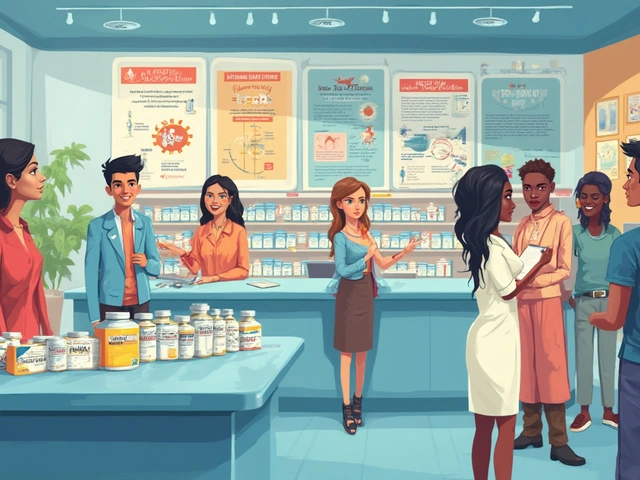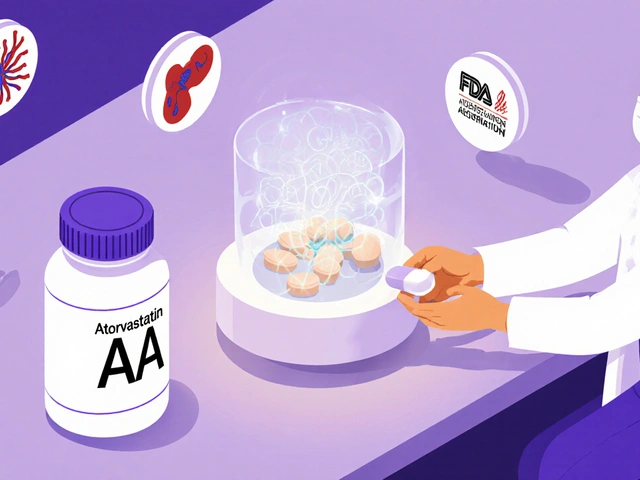Adolescents on ADHD Medications: Growth, Appetite, and Side Effect Monitoring

ADHD Growth & Appetite Monitor
Your Teen's Data
What to Monitor
Growth Status
Recommendations
When a teenager starts taking ADHD medication, parents often focus on the big wins: better grades, fewer meltdowns, improved sleep at night. But there’s another side to the story-one that doesn’t always make the headlines. ADHD medication can quietly affect how a teen grows, eats, and feels day to day. For many families, these subtle changes become the real challenge-not the hyperactivity, but the hunger that disappears by 10 a.m., the height chart that stops climbing, or the weight that slips away without explanation.
How ADHD Medications Work and Why Side Effects Happen
ADHD medications like methylphenidate (Ritalin, Concerta) and amphetamines (Adderall, Vyvanse) work by boosting dopamine and norepinephrine in the brain. These chemicals help teens focus, control impulses, and manage emotions. But the same brain pathways that improve attention also affect appetite and metabolism. That’s why appetite loss is one of the most common side effects-seen in 50 to 80% of teens taking stimulants. These drugs don’t just change behavior. They change biology. The body’s natural hunger signals get suppressed, especially during peak medication hours. For a growing teenager, that’s a problem. Calories matter. Protein matters. Nutrients matter. If a teen skips lunch because they don’t feel hungry, and then eats junk food late at night when the medication wears off, they’re not getting the nutrition their body needs to grow.Growth Suppression: The Numbers Behind the Concern
Studies show teens on long-term stimulant treatment may grow 1 to 2.5 centimeters (about half an inch to an inch) shorter than expected by adulthood. That sounds small, but for a kid already on the shorter end of the growth curve, it can be significant. The MTA follow-up study from 2004 found that teens who took stimulants continuously for years ended up 2.36 to 2.55 cm shorter than peers who didn’t. Other research, like the 2017 Froehlich study, found no difference at all. So why the contradiction? The answer lies in how the medication is used. Teens on extended-release formulations like Concerta or Vyvanse show slightly more growth delay than those on short-acting pills. Amphetamine-based meds tend to have a stronger effect on height than methylphenidate. After three years, amphetamines were linked to 1.7 cm less growth, while methylphenidate showed 1.1 cm. But here’s the key: most of this happens in the first year or two. After that, growth slows but doesn’t stop. And here’s the good news: 89% of teens who experienced growth suppression caught up to their genetic height potential by age 25, according to a 2023 follow-up to the MTA study. The body often makes up for lost time-especially if there’s a break in medication.Appetite Loss: More Than Just Skipping Lunch
Parents often describe it this way: "My child eats like a bird during school, then devours the fridge after 5 p.m." That’s not just a habit-it’s a pattern tied to medication timing. When stimulants peak in the bloodstream, hunger shuts down. By lunchtime, many teens report feeling full or just not hungry at all. One Reddit user shared that her 14-year-old son on 40mg of Vyvanse eats one granola bar at school and sometimes skips lunch entirely. Then, when the drug wears off, he eats over 2,000 calories in the evening. That’s not sustainable. It leads to poor nutrition, blood sugar spikes, and weight fluctuations that can worsen mood and focus. In a 2022 CHADD survey, 19% of parents reported their teen lost more than 10% of their body weight on ADHD meds. One parent said her daughter’s weight percentile dropped from 50th to 15th after eight months on Concerta-enough to prompt a switch to a non-stimulant. That’s not rare. It’s a red flag.Monitoring Growth: What Doctors Should Be Tracking
The American Academy of Pediatrics says you need to measure height and weight at three key points: before starting meds, every three months during the first year, and every six months after that. That’s not optional-it’s standard. But not all practices do it. Growth is measured using z-scores, which compare a child’s height or weight to others their age and sex. A drop of more than 0.5 in height z-score or 1.0 in weight z-score within six months means action is needed. That could mean adjusting the dose, switching meds, or taking a break. The NHS and Cleveland Clinic both recommend medication holidays-especially during summer breaks-to let growth catch up. About 73% of pediatric psychiatrists support this approach. In one study, 87% of teens regained 75% of their normal growth rate within six months of stopping meds.What Works: Practical Strategies for Families
You don’t have to choose between symptom control and healthy growth. There are ways to manage both.- Feed before the medication hits. Serve a high-calorie, protein-rich breakfast before school. Think scrambled eggs with cheese, peanut butter on whole grain toast, or a smoothie with banana, oats, and almond butter.
- Plan for the evening. Make dinner a family event. Include calorie-dense foods like avocado, nuts, whole milk yogurt, and full-fat dairy. Avoid empty carbs-focus on nutrients.
- Snack smart. Keep healthy, high-calorie snacks on hand for after school: trail mix, cheese sticks, hummus with pita, or protein bars with at least 10g of protein.
- Track calories and weight. Use a simple app or notebook. Note what they eat, when, and how much. You’ll spot patterns fast.
- Consider non-stimulants. Atomoxetine (Strattera) doesn’t suppress appetite or growth as much-but it’s 30-40% less effective for core ADHD symptoms. It’s a trade-off.

When to Consider a Change
Not every teen needs to stop meds. But if you see:- Weight loss over 10% of body weight
- Height growth slowing to less than 4 cm per year after age 12
- Consistent refusal to eat during school hours
- Energy crashes or mood swings tied to hunger
The Bigger Picture: Benefits vs. Risks
It’s easy to focus on the side effects. But stepping back, the benefits are huge. Teens on effective ADHD treatment are less likely to drop out of school, get into car accidents, or develop substance use disorders. Their self-esteem improves. Relationships get better. The risk of long-term harm from untreated ADHD far outweighs the risk of temporary growth delay. As Dr. Joseph Biederman from Harvard put it: "The height reduction of about one inch is clinically insignificant when weighed against the benefits on academic achievement and social functioning." But that doesn’t mean we ignore it. We manage it. We track it. We adjust.What’s Next: Personalized ADHD Care
The future of ADHD treatment is personal. Companies like Genomind are using genetic testing (CYP2D6) to predict who’s more likely to have side effects like appetite loss or growth delay. In their 2022 trial, teens whose doses were adjusted based on genetics had 40% fewer growth-related issues. The American Academy of Pediatrics is updating its guidelines in late 2024 to include clearer growth monitoring thresholds. And the National Institute of Mental Health is funding a new four-year study to finally answer the question: How much does long-term stimulant use really affect adult height? For now, the message is simple: Don’t assume. Don’t ignore. Don’t wait until it’s too late. Measure. Track. Talk. Adjust.Do ADHD medications permanently stunt growth?
No, most teens catch up. Studies show that 89% of adolescents who experienced growth suppression while on stimulants reached their full genetic height potential by age 25. The effect is usually temporary and most noticeable in the first one to two years of treatment. Growth often resumes after a medication break or when the dose is lowered.
How often should height and weight be checked on ADHD meds?
At least three times in the first year: at the start, then every three months. After that, every six months is standard. If growth slows significantly, more frequent checks may be needed. The American Academy of Pediatrics says to intervene if height or weight z-scores drop by more than 0.5 or 1.0 respectively within six months.
Can I give my teen a "medication holiday" to help with growth?
Yes, and many doctors recommend it-especially during summer break or holidays. About 73% of pediatric psychiatrists support this approach. Taking a break allows the body to catch up on growth and appetite. However, it’s not always safe or practical. Teens with severe symptoms may struggle academically or socially without meds. Always discuss this with your provider before stopping.
Which ADHD meds cause the least appetite loss?
Methylphenidate-based medications (like Ritalin or Concerta) tend to cause less appetite suppression than amphetamines (like Adderall or Vyvanse). Non-stimulants like atomoxetine (Strattera) rarely affect appetite or growth-but they’re less effective for core ADHD symptoms. Newer formulations like Adhansia XR show 18% less weight loss in clinical trials.
What should I feed my teen if they lose appetite during the day?
Focus on calorie-dense, nutrient-rich meals before the medication kicks in-like eggs with cheese, peanut butter toast, or smoothies with banana, oats, and protein powder. Save high-calorie snacks for after school: nuts, cheese, full-fat yogurt, or avocado toast. Avoid sugary snacks. Evening meals should be balanced and filling-think pasta with meat sauce, chicken with rice and beans, or salmon with sweet potatoes.
Is it safe to switch from stimulants to non-stimulants?
It can be, but it’s not always better. Non-stimulants like atomoxetine don’t suppress appetite or growth, but they’re about 30-40% less effective at reducing core ADHD symptoms. They also take weeks to work and can cause side effects like fatigue or nausea. Switching is best for teens with severe appetite loss, weight loss, or growth delay-not for everyone.






Comments (11)
krishna raut
31 Oct 2025
Stimulants suppress appetite? Yeah, been there. My nephew on Adderall only eats after 8pm. Now he’s 15 and 10 lbs underweight. Doc said ‘it’s normal’ - but normal doesn’t mean okay.
Emily Kidd
1 Nov 2025
my kid on vyvanse eats like a raccoon at midnight 😅 breakfast before school is non-negotiable. smoothie with peanut butter, oats, banana, protein powder - he guzzles it before the med kicks in. no more ‘i’m not hungry’ at lunch.
caiden gilbert
2 Nov 2025
it’s wild how meds that fix focus also mess with hunger. like your body’s got two switches: one for attention, one for appetite - and the doc flipped both with the same key. guess evolution didn’t plan for teens to be chemically optimized for calculus.
Alex Hundert
3 Nov 2025
Doctors who don’t track z-scores every 3 months are negligent. If your kid’s growth slows, it’s not ‘just a side effect’ - it’s a clinical red flag. We’re not talking about a little lag, we’re talking about permanent stunting if ignored. Stop waiting for the ‘it’ll catch up’ fairy tale.
MOLLY SURNO
4 Nov 2025
Thank you for writing this with such care. As a parent of a 16-year-old on Concerta, I’ve spent hours researching growth charts and calorie density. It’s easy to feel alone in this. Your mention of the MTA study gave me real hope - and practical steps. We’re now doing family dinners with full-fat yogurt and avocado every night. Small changes, big impact.
Aditya Singh
4 Nov 2025
Let’s be real here - the real issue isn’t the meds it’s the systemic failure of pediatric psychiatry to prioritize longitudinal monitoring. The APA guidelines are a joke when 80% of clinics don’t even have a growth chart on the wall. This isn’t about ‘parental responsibility’ - it’s about institutional malpractice disguised as medical care
Justin Cheah
5 Nov 2025
you know what’s really happening? Big Pharma doesn’t want you to know that stimulants stunt growth because then parents would stop giving them. They fund studies that say ‘it’s temporary’ - guess who paid for the 2023 MTA follow-up? Same company that makes Vyvanse. They’re selling a cure and hiding the cost. The ‘catch-up’ myth is just marketing. Your kid’s not gonna grow back those centimeters - the science is buried under profit margins.
Carolyn Kiger
7 Nov 2025
My daughter switched from Vyvanse to Strattera last year. Her appetite came back like a flood - and so did her confidence. She’s not ‘cured’ of ADHD - she still struggles with focus - but she’s eating regular meals, gaining weight, and actually talking about her day. The trade-off? It took 6 weeks to work. But now she’s not hiding in her room because she’s too tired from hunger. Worth it.
phenter mine
8 Nov 2025
i think ppl overreact to the growth thing. my son on ritalin is 5’7” and 15, his dad is 5’9” and mom 5’5” - he’s right on track. plus, he’s getting As now. i’d rather have a smart kid who’s a little smaller than a tall kid who drops out
Prakash pawar
10 Nov 2025
you know what’s funny? we spend billions on ADHD meds but nobody talks about how we’re basically turning teens into metabolic robots - suppress hunger, enhance focus, ignore the body’s ancient signals. we’re engineering compliance, not health. the real question isn’t ‘how much do they grow?’ - it’s ‘what kind of person are we raising when we medicate their biology into silence?’
Katherine Reinarz
11 Nov 2025
my daughter lost 15lbs on Adderall and i cried for 3 days. the doctor said ‘it’s common’ like it was a weather report. then she started crying at dinner saying ‘i hate being hungry all day’. i switched her to non-stimulant and now she eats like a normal teen. i don’t care if she’s less ‘focused’ - i want my daughter back, not a zombie with a 4.0 GPA